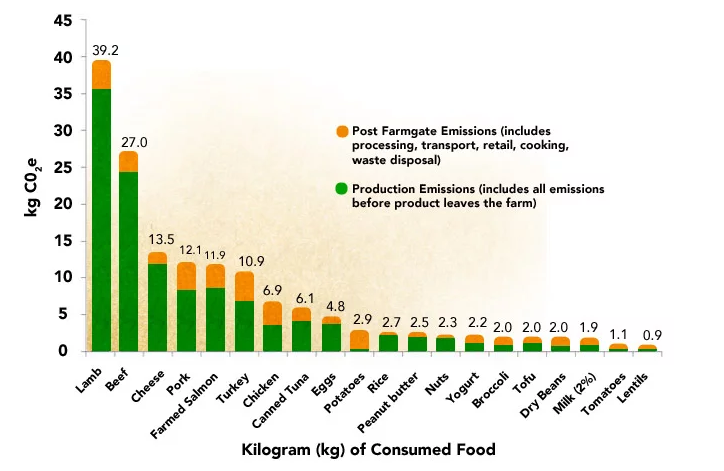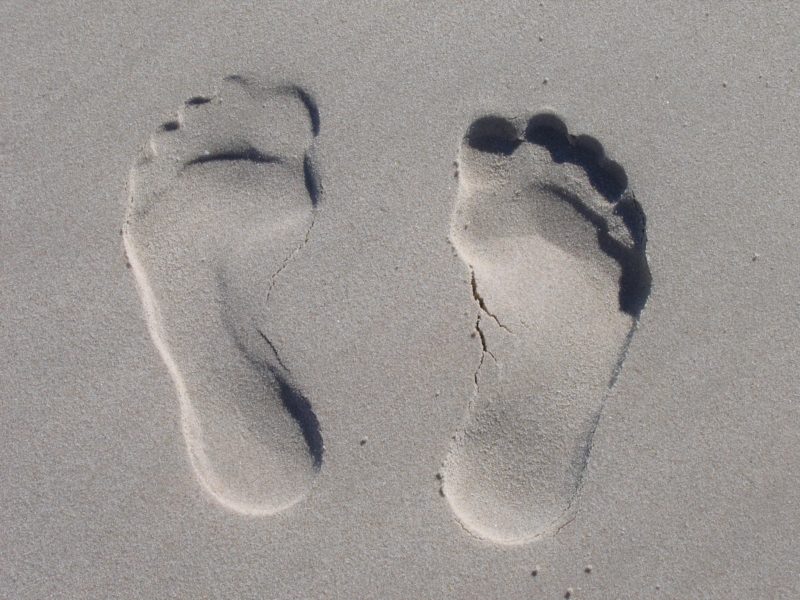You’ve probably seen the call to “reduce your carbon footprint” in tackling our climate crisis. But what is carbon footprint?? And why should you care? Let’s sort it all out!
Table of Contents
What the Heck is “Carbon Footprint”?
Just like a footprint in the sand that leaves a mark, a carbon footprint is the mark humans, or human-related entities leave on the environment. It’s the total of all greenhouse gas (GHG) emissions associated with human activity over a set time period.
When you think about it, there’s a carbon footprint for everything! Everything you purchase or own–a toy, car, house, banana–has a carbon footprint. And a carbon footprint can be used to express the measurement of emissions from activities of a product, organization, event, or even a country.
Still confused? This excellent video on what is carbon footprint is a clear visual explainer of the topic.
A Note About Greenhouse Gases
While carbon dioxide is the primary greenhouse gas emitted into the atmosphere through human activities, it’s not the only one. It’s difficult, however, to understand how much GHG emissions are associated with a particular activity if we’re looking at say, methane, ozone, and carbon dioxide measurements related to that activity.
An easier way to view and understand one’s carbon footprint is to sum all GHG emissions from each stage of activity and then express that result as a carbon dioxide equivalent.
Why Should You Care?

So now that I’ve explained what is carbon footprint, you may be wondering why you need to know? So what if we leave a mark–or footprint–on the environment?
Well, the rapidly increased accumulation of greenhouse gases by human activity in our atmosphere is what contributes to global warming. The bigger the carbon footprint of any activity, the greater the cumulative contribution to climate change.
If we all make a conscious effort to reduce our individual carbon footprints, we can be a part of the solution to this climate crisis.
A Smaller Carbon Footprint is Good for the Planet and Your Wallet
The good news is that each one of us can make a difference by shrinking our carbon footprint through changes in our daily habits. Some of these changes are easy. Others take more planning and might involve lifestyle changes. Many, though, will save you money while making your home more energy-efficient.
What are the Major Sources of Emissions?
As I’ve explained, you leave a “footprint” on the environment through every action you take that releases greenhouse gases into the atmosphere. The more you use, the bigger your footprint.
Primary Emission Sources in the U.S.
According to the EPA, the primary sources of GHG emissions in the U.S. are:
- Transportation
- Electricity
- Industry
- Residential and commercial
- Agriculture
- Land use
This is helpful for a general understanding of the breakdown of the proportions of sources, but it doesn’t help us with individual or product-related activities.
Life Cycle Emissions
It gets complicated when we look at an item or an activity to try to determine its carbon footprint. For example, which type of food has a larger carbon footprint – broccoli or cheese?
The Environmental Working Group worked to answer just that question by looking at the life cycle total of GHG emissions for common protein foods and vegetables.
Take a look at the graph, below. (Emissions are expressed as kilograms (kg) of carbon dioxide equivalents (CO2e) per kg of consumed product.) Aside from these interesting results, the thing to note is that there is a life cycle of emissions associated with each food.
EWG groups the life cycle into “production” and “post-farmgate” emissions, but the key to remember is that there are numerous steps in the life cycle of an item. These steps all add up to form that item’s carbon footprint.
Are you wondering why lamb, beef, and cheese have the highest emissions? EWG reports that the main reason is that ruminant animals generate “methane through their digestive process” and methane is 25 times more potent than carbon dioxide. Also, “pound for pound, ruminants require significantly more energy-intensive feed and generate more manure than pork or chicken.”

How Do You Calculate Your Own Carbon Footprint?
The first step in reducing your carbon footprint is to take stock of your current footprint. This is a difficult calculation because each stage of activity has a carbon footprint associated with it. Fortunately, there are resources to help give you a rough estimate of your and your family’s footprint.

Home Energy Audit
For a detailed assessment of your home’s energy usage, consider a professional home energy audit. The auditor will conduct a thorough examination of your residence, including your utility bills. To get you started, see the Department of Energy’s comprehensive guides on resources for professional and do-it-yourself home energy audits.
Make sure you get a few references before you make your selection. The Residential Energy Services Network‘s directory lists certified energy raters and auditors near you.
Carbon Footprint Calculators
There are several sites for calculating a rough estimate of your carbon footprint. I list a few here:
- EPA’s Carbon Footprint Calculator
- The Nature Conservancy’s mobile version
- Global Footprint calculator.
- My Emissions’ helps you make climate-friendly food choices with its carbon footprint labels. Look for the My Emissions labels on food products and recipe sites.
- Mastercard Carbon Calculator. Created in collaboration with Swedish fintech Doconomy, the Carbon Calculator allows you to view the estimated carbon footprint of all your purchases.
Greenhouse Gas Equivalencies Calculator
This calculator from the EPA helps you in communicating and planning your GHG reduction strategy by translating abstract measurements into concrete, understandable terms.









